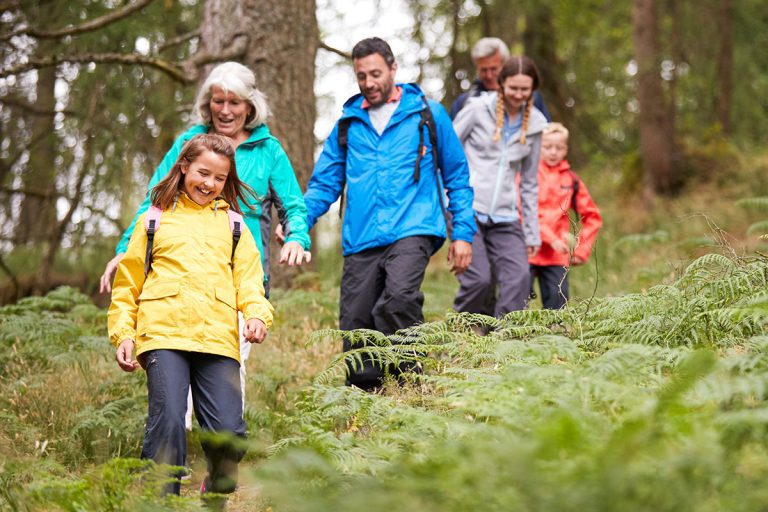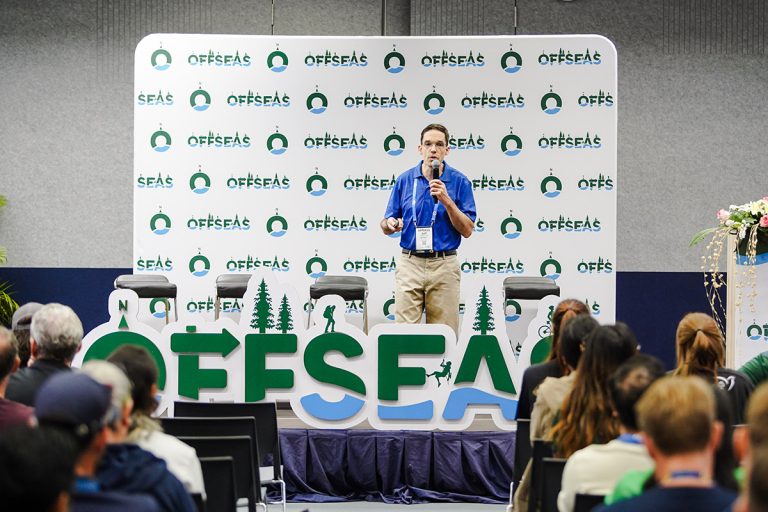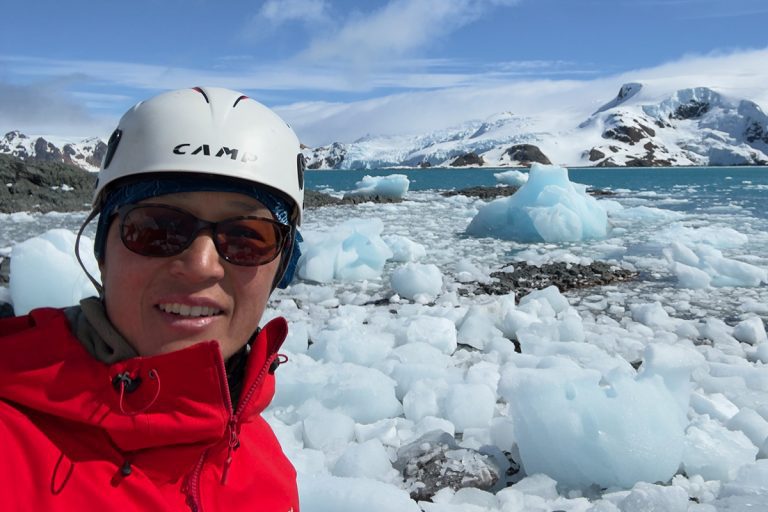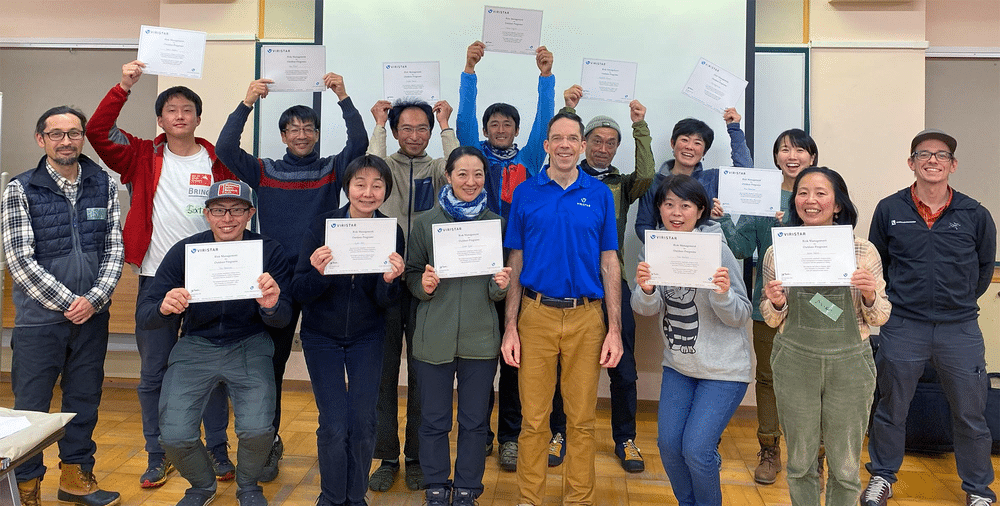
Viristar delivered a two day “Risk Management for Outdoor Programs” course for adventure guides in Nagano, Japan last week, as part of a set of trainings organized by the government of Nagano Prefecture and Japan’s adventure tourism sector for adventure guides in Nagano.
Graduates of the risk management course and other trainings that are part of the Nagano Outdoor Guide curriculum will earn “recommended” status by the government as nature and outdoor adventure guides.
Mountaineer, global explorer and forest therapy specialist Satoki Yoshida (ヨシダサトキ), a graduate of the training, said, “The course helped us to have a comprehensive understanding of risk management for outdoor tourism.”
Another graduate, certified Mountain Guide and Azumino City Certified Guide-Interpreter Ayako Ueda (ウエダ アヤコ), who has been working as a guide since getting her license two years ago, said the course was “fun and engaging.”
The course was conducted in person at the Shinshu Takato Youth Outdoor Learning Center in Takatō, a village nestled in a valley between Japan’s Southern Alps and Central Alps in Nagano Prefecture, and famous for its beautiful sakura, or cherry blossoms.
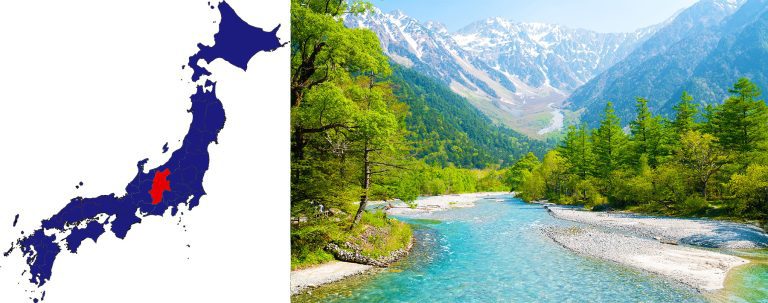
Viristar Risk Management Course To Be Required Part of Nagano Adventure Guide Training
Course organizers were pleased with the class, and are seeking to institute the risk management class as a standardized part of the training progression for all English-speaking adventure guides across the prefecture.
Outdoor guides and Outdoor Tour Directors would be certified in relevant technical skills (for example, being certified by the Japan Mountain Guide Association as a hiking guide, and completing an Avalanche Safety Training class.
They would also complete a Leave No Trace training and a wilderness medicine course, and go through natural history and cultural history interpretation training.
Guides would also meet the qualifications of the Adventure Travel Guide Standard of the Adventure Travel Trade Association, and complete the risk management course from Viristar.
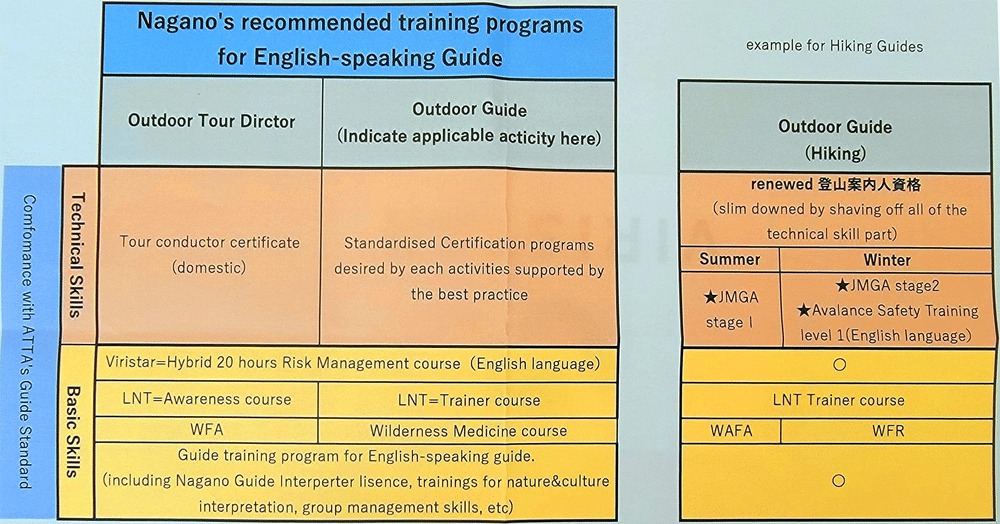
Course Topics
The course curriculum, which unfolded over two days, covered:
- Adventure Safety Standards and Laws
- Risk Domains
- Risk Management Instruments
- Incident Reporting
- Media Relations
- Systems Thinking
- Emergency Response
- Safety Culture
- Risk Management Plans
- Human Factors in Incident Causation
Participants engaged in role plays, reviewed case studies and presented their findings, and analyzed outdoor safety scenarios. Each participant completed an individualized action plan to help them prioritize ongoing professional development steps for managing risks in their guiding activities.
Future versions of the course will add in additional time to cover these subjects in more detail, and will incorporate additional topics, including:
- Use and limitations of probabilistic risk assessments
- Psychological safety
- Equity and inclusion
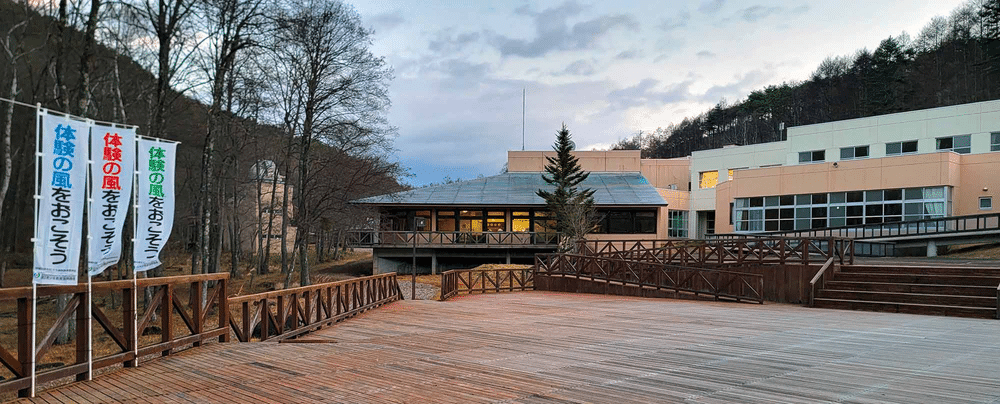
Goal: Outdoor Guides Qualified to International Standard
The Nagano Guide Training plan springs from a project underway the last few years to improve Nagano’s capacity to provide high-quality services to international visitors.
The number of visitors to Japan has been rapidly increasing, but some adventure guides in Japan were seen to engage in dangerous outdoor guiding practices, in part due to their lack of training to an international standard. It became clear there was a need to increase the number of English-speaking guides trained in outdoor safety and environmental ethics.
A comprehensive guide training curriculum was developed, including minimum impact camping practices, wilderness first aid, English language proficiency.
The Viristar training was added to the training plan to support incident prevention and emergency response.
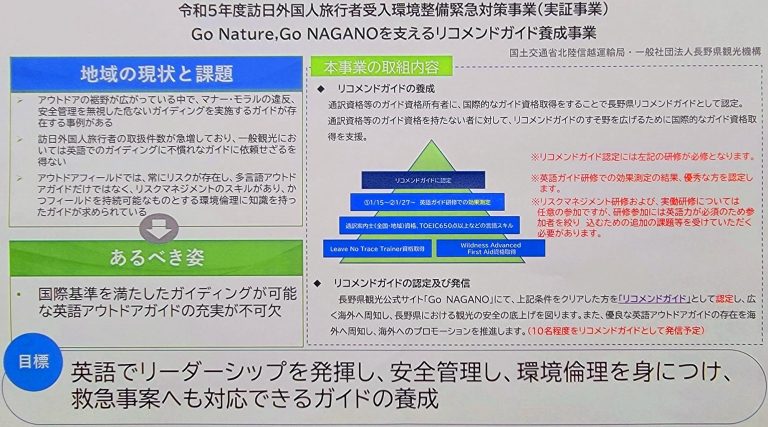
Course Participants
Twelve participants completed a rigorous selection process and completed Viristar’s Risk Management for Outdoor Programs course. Guides wishing to take part in the training were required, as part of the application process, to watch a video by a popular motivational speaker, summarize the presentation contents, and provide an original analysis of the presentation, in an English-language video, submitted to course organizers.
The training cohort included both novice and highly experienced guides. Some came to guiding after decades of work in finance, aviation, or civil engineering. The careers of others focused on shinrin yoku (forest bathing, 森林浴), mountain guiding, ski guiding, and leading hiking, cultural and city tours.
Many were alums of the Azumino City Certified Guide Interpreter Training Course, a ten-day training for adventure travel guides based in Azumino, which included field- and classroom-based components to train hiking guides to an international standard. This training was developed over the last four years by Isamu Yokobori, a lead organizer of the Nagano training project, in collaboration with the Tourism Division, Department of Commerce, Industry, Tourism and Sports, Azumino City, in Nagano Prefecture.
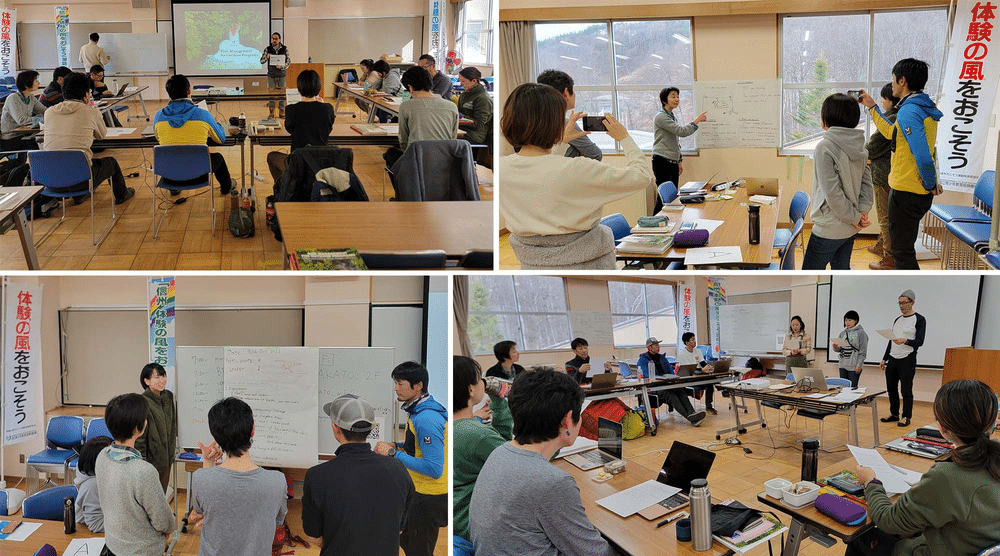
A Collaborative Effort
The Nagano guide training project came together due to the tireless efforts of Isamu Yokobori, an experienced mountain guide and Wilderness EMT with qualifications from the Association of Canadian Mountain Guides and Japan Mountain Guide Association. Isamu has a passion for adventure travel, outdoor safety, and protection of nature, and together with mountain guide Takuya Ota, established Wilderness Medical Associates-Japan, the Japan branch of WMA.
The logistics of the Risk Management for Outdoor Programs course were coordinated by the Nagano Branch of JTB Corporation, a Japan-based global travel agency focused on tourism, which was formerly part of the Japanese government as the Japan Tourist Bureau.
JTB-Nagano collaborated with TreckTreck, an experience-based travel agency located in Tokyo, who handled myriad details of the training. TreckTreck specializes in offering unique travel experiences that provide the opportunity to experience real life and activities in Japan, and interact directly with local people, and the organization’s impeccable attention to detail and service helped make the training smooth and successful.
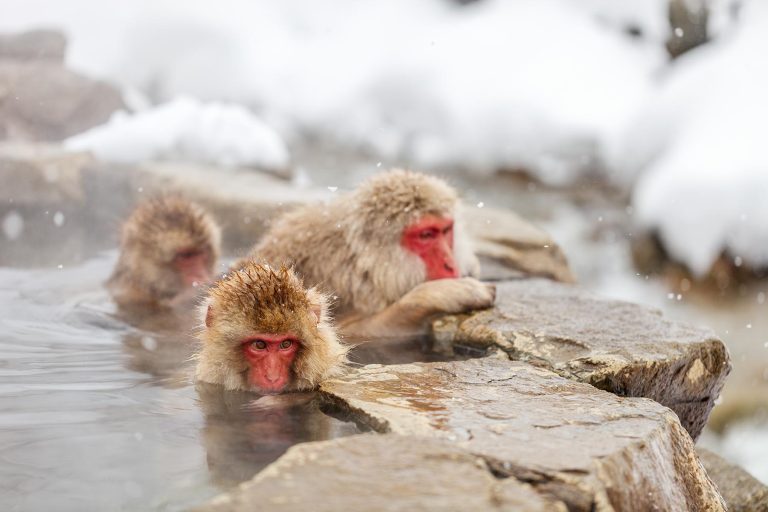
A Japanese Experience
The adventure risk management training was an experience immersed in the culture of Japan.
The class, held at a woodsy camp-style lodge facility run by Japan’s National Institution for Youth Education, occurred alongside primary school groups also at the outdoor education center. The day began at 7:00 sharp, with the raising of the National Shinshutakato Youth Outdoor Learning Center flag and the Japan flag, accompanied by the national anthem, to which some sang along.
The morning gathering also included “radio exercises,” a short and delightful set of easy calisthenics performed to upbeat music.
The tradition of radio exercises, also called rajio taiso (ラジオ体操), started in Japan in 1928 to boost public health. Inspired by similar ‘radio exercises’ that previously aired in the USA, today tens of millions of people in Japan do these warm-ups, usually together, multiple times a week. Radio taisō has since spread around the world, but retains the Japanese emphasis on group and health.
Windmilling along with crowds of primary schoolers, the Risk Management for Outdoor Programs group completed the routine, which consists of 13 movements, taking about three minutes, and which is one of the most perfect ways to start one’s day.
The outdoor safety class ended at 5 pm for flag-lowering and the national anthem again, and from 7:30 to 8:30 pm, after a healthy veggie-oriented dinner provided by the Center, the group was scheduled for bath time, in the communal sex-segregated hot water baths (like an onsen, but without hot spring mineral water) of the shower-free center.
Japan is generally a safety-oriented culture, and emphasizes rules for appropriate conduct. (During the course, a driver in Tokyo was arrested for running over a pigeon.) This culture fit in well with a class about safety guidelines.
The outdoor learning center also emphasized inclusion, with gender-inclusive bathrooms, as part of the Shinshu-Takato SDGs Project in support of the United Nations Sustainable Development Goal 5, Gender Equality.
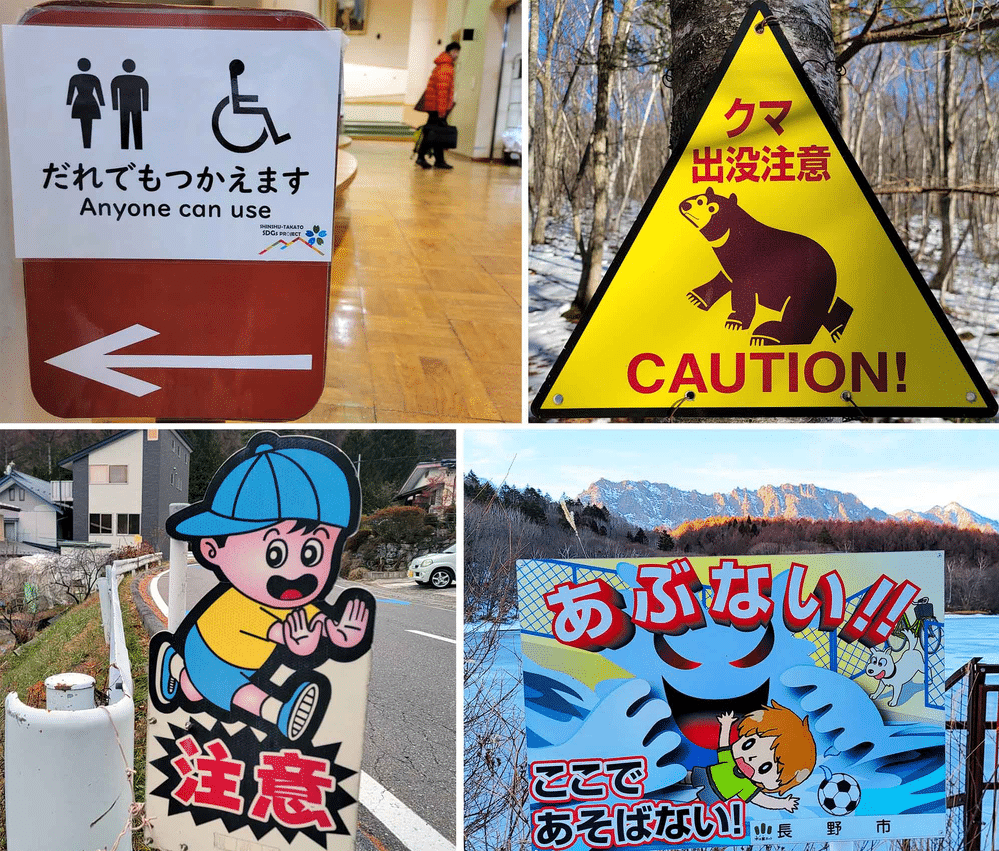
Nagano: Coexistence with Nature
The Prefecture of Nagano, known for snow-capped mountains, national parks, and hot springs, was a natural setting for the outdoor safety class. The mountainous region, rich with hiking trails and boating opportunities, is a popular escape from summertime heat, and with skiing and mountaineering options, is a world-class winter sports destination.
Nagano (motto: “Coexistence with Nature”) was the site of the 1998 Winter Olympics and Paralympics, which included skiing, snowboarding, bobsleigh, curling, ice skating, hockey and luge.

Outdoor adventures popular in the region include hiking, mountain climbing, trail running, trekking/backpacking, paragliding, zip-lining and canopy tours, rock climbing, tree climbing, whitewater rafting, canoeing, kayaking, SUP, bicycling, canyoning, forest bathing, snowboarding, snowshoeing, and downhill, backcountry and cross-country skiing.
“Shower climbing” or sawanobori (沢登り) is also popular in the area. Known in Taiwan as “river tracing,” this involves scrambling and wading up canyons, including scaling waterfalls.
These outdoor adventures are often combined with natural history interpretation experiences and cultural and historical explorations, from onsen bathing and washi paper making, to temple visits.
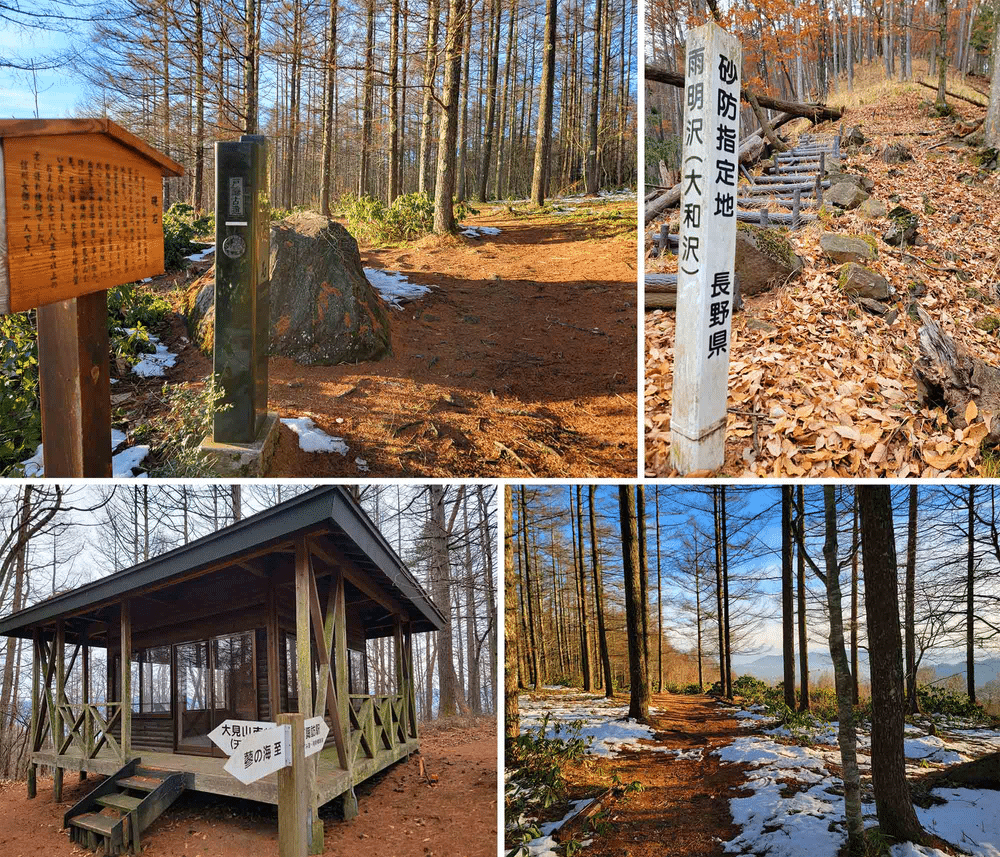
Looking Forward
Viristar is pleased to have had the opportunity to support the outdoor adventure and experiential travel sector in Japan, and to work with some of Japan’s leading adventure guides.
Shinrin-yoku facilitator and certified Azumino City Guide-Interpreter Sumie Ojima (オジマ スミエ) commented on the risk management training, saying it was “Excellent…[the course] helped me answer questions that I had, and helped me see next steps to work on.”
Big wall climber and former alpine ski racer Akiko Nakae (ナカエ アキコ), now a JMGA-credentialed adventure guide and owner of backcountry skiing and mountaineering expedition provider Epic Japan, and a director of the Japan Backcountry Ski Guides Association, commented, “Great course…I hope anyone in the outdoor industry can access this course.”
Viristar looks forward to an ongoing collaboration with outdoor adventure guides in Japan!
